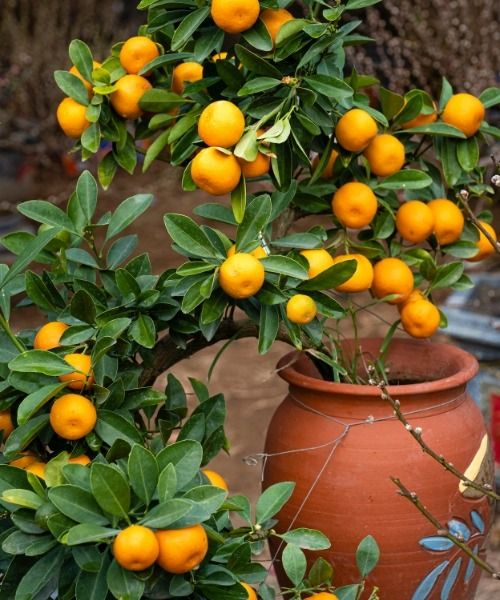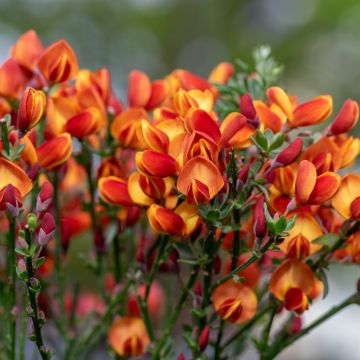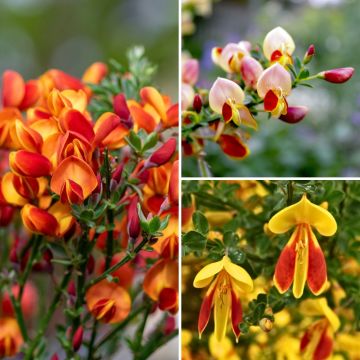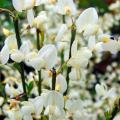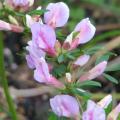Orange flowering Brooms
Would this plant suit my garden? Set up your Plantfit profile →
Available in 2 sizes
Available in 1 sizes
A selection of Brooms or Cytisus with orange flowers. Well known for its dazzling yellow spring flowers, Cytisus scoparius or broom has produced some magnificent varieties whose flowering is generally a flamboyant orange colour. This is particularly the case for the compact Cytisus scoparius 'Lena', with its abundant reddish-orange and yellow flowers, vibrant in colour, or Cytisus 'La Coquette', with a more upright habit, is spectacular with its yellow and dark pink bicolored flowers, fragrant in May-June. More rounded, the cultivar 'Goldfinch' has pea-like flowers blending orange-yellow and red, merging into a beautiful fiery orange. The flowers of Cytisus x praecox 'Apricot gem' are multicoloured, with golden yellow edged with red in the centre, topped with apricot-orange petals. They form a beautiful mass of colour which is very warm yellow to orange. These very hardy bushes thrive in a light, well-drained, non-calcareous soil, with a sandy or rocky tendency. Choose a sunny and warm position. They all make lovely large colourful borders, or fragrant and honey-producing small hedges.
The broom is a generous but frugal shrub that generally thrives in poor and fairly dry soil in summer. It deserves a prime spot in the garden. It can be paired with numerous shrubs with ornamental foliage or spring flowering.
Haven't found what you were looking for?

































